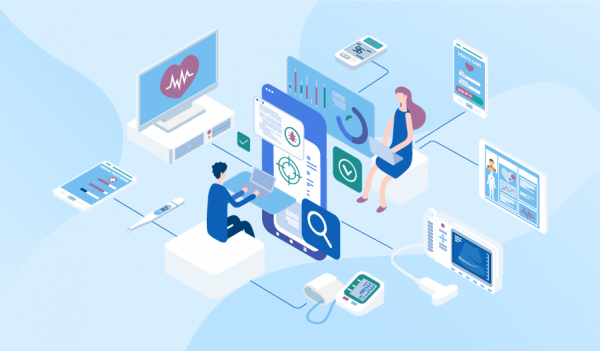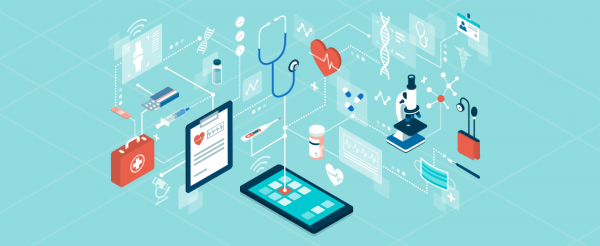From wearable health monitors to robotic surgery, medical device software has the potential to transform the way healthcare is delivered and improve patient outcomes. In this article, we explore examples of medical device software development, as well as the promising future prospects of this rapidly evolving field. We also discuss the cost of medical device software development and whether non-medical institutions can benefit from this technology.
What Is Medical Device Software Development?

The process of producing software applications that support medical equipment is known as medical device software development. These might include medical imaging software, patient monitoring software, and medical data management software. Medical device software development requires a thorough grasp of both the medical device and the software development process. It is a highly regulated area since medical device software must adhere to stringent regulatory standards to assure patient safety and data privacy.
Medical device software development is crucial to the advancement of healthcare technologies and the improvement of patient outcomes. To guarantee that the resultant software is safe, effective, and complies with industry standards, a multidisciplinary approach is required, involving cooperation between medical specialists, software engineers, and regulatory experts.
Examples of Medical Device Software Development
- Wearable Health Monitors. As a tool to track health and well-being on the move, wearable health monitors are becoming more popular. These devices utilize sensors and algorithms to monitor vital indicators including heart rate, blood pressure, and oxygen saturation, as well as identify aberrant cardiac rhythms and sleep patterns.
- Robotic surgery. Robotic surgery is an innovative medical technique that uses robotic arms and cutting-edge software to carry out minimally invasive procedures. This technique is more precise, accurate, and controlled than conventional surgery, resulting in shorter recovery periods and improved patient results.
- EHRs (Electronic Health Records). EHRs are digital records of the patient’s health information that can be viewed and updated in real-time. EHRs allow healthcare practitioners to analyze patient history, test results, and other essential information quickly and correctly, enhancing patient care and outcomes.
The Promising Future of Healthcare IT Software for Medical Devices

Medical device software in healthcare is projected to make substantial advances in patient care and outcomes in the future with the help of startups and professional software development company services. With the rising need for remote and customized healthcare, medical device software is positioned to play an important role in telemedicine and remote patient monitoring.
The application of artificial intelligence (AI) and machine learning (ML) in medical device software is an interesting area. These technologies can evaluate massive volumes of patient data to give more precise diagnoses and individualized treatment strategies, resulting in better patient outcomes.
Another interesting development is the integration of medical devices with electronic health records (EHRs) to deliver real-time patient data and expedite clinical operations. This may improve communication among healthcare practitioners, resulting in more efficient and effective treatment.
The growing usage of wearables and mobile devices in healthcare is anticipated to stimulate the development of medical device software that can connect smoothly with these technologies to allow continuous monitoring and data collecting.
How Much Does Medical Device Software Development Cost? Can It Be Used By Non-Medical Institutions?
The cost of medical device software development varies greatly based on variables such as the program’s complexity, the needed regulatory compliance, and the hourly rate of the development team. A modest medical device software development project may cost tens of thousands of dollars, and more complicated projects might cost hundreds of thousands if not millions.
The cost of not investing in medical device software, on the other hand, might be significantly greater. Poor or inadequate medical device software may cause patient suffering, regulatory penalties, and reputational damage. As a result, seeing medical device software development as an investment in patient safety and economic success is critical.
Although medical device software is generally intended for use in medical institutions, it may also be utilized by non-medical organizations with comparable needs, such as fitness centers or sports teams. Wearable health monitoring gadgets, for example, are growing in popularity in the fitness sector, enabling users to check their heart rate, steps walked, and other parameters. These devices interpret and analyze the data they acquire using medical device software.
